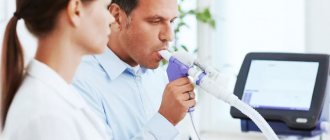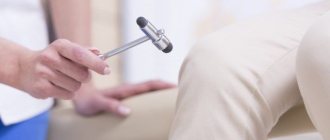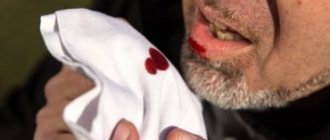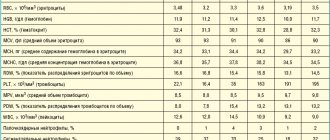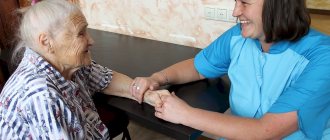Pain in the back of the head is a fairly common problem. And she has many reasons. Therefore, it is important to find their problems in order to feel relief. Let's find out together with a specialist how to do this.
Headaches in the back of the head can have several different causes. For example, it may only be muscle damage due to a minor injury, or it may be a secondary symptom of other pathologies. The type and location of pain can play a critical role in diagnosing the cause. If the pain is severe and repeated, be sure to consult a doctor.
Causes of pain in the back of the head in an adult
“Pain in the back of the head itself does not indicate the cause of this pain,” explains neurologist Elena Gaivoronskaya.
– The doctor assesses the frequency of pain, its intensity, duration, nature (pulsating, pressing, stabbing), associated symptoms. Only on the basis of all this data can a diagnosis be made. There are a number of reasons why headaches may occur predominantly in the back of the head.
headaches .
This is the most common cause of pain in the back of the head. Such pain can last from 30 minutes to 7 days. Such pain can be caused by severe stress, overwork, lack of sleep, malnutrition, poor posture or not drinking enough water.
Patients with this problem usually feel tension in the back or front of the head. The pain can range from dull to severe.
Migraine.
Another common type of headache that often appears in childhood and gets worse with age. Migraines are most common in women. Its symptoms include severe pain on one side of the head with nausea, vomiting and blurred vision. Patients are usually sensitive to light, noise, or smell. Physical activity may increase pain. It can last from several hours to several days.
Causes of migraines include emotional or physical stress, environmental and dietary changes. Sometimes medications (such as birth control pills) can also cause migraines.
Overuse of medications or recurring headaches.
These headaches can develop if a person takes too many painkillers. They are very strong and are often accompanied by nausea, anxiety, irritability, fatigue, difficulty concentrating, memory loss and even depression.
Occipital neuralgia.
A rare but severe headache that usually begins at the base of the neck and spreads to the back of the head and then behind the ears. Often occurs when the occipital nerves, which run up the back of the neck to the base of the skull, are damaged or irritated. The pain is accompanied by a burning or shooting sensation and persists on one side of the head, but often intensifies with movement of the neck. The patient is usually sensitive to light.
Possible causes include spinal injury, tumors, nerve damage caused by diabetes, swollen blood vessels, and rarely infection.
Headaches during physical activity.
They occur as a result of stressful activities and often occur after physical exercise. This pain resembles palpitations and can last from 5 minutes to 2 days.
Often occurs after heavy weight exercise or running. But sometimes they happen after sexual intercourse or pushing in the toilet.
Headache due to arthritis.
It appears in the back of the head and intensifies with movement. May be the result of arthritis of the first, second or third vertebra. Either it is associated with changes in the bone structure of the neck or inflammation of the blood vessels in the head.
In addition, the cause of a headache in the back of the head can be:
- osteochondrosis of the cervical spine;
- high blood pressure;
- increased intracranial pressure;
- stress;
- brain tumors;
- brain aneurysm;
- subarachnoid cerebral hemorrhage;
- cervical spine injuries and traumatic brain injuries;
- meningitis.
Diagnostics
A neurologist is involved in determining the nature of the disease that provokes pain in the left half of the head. According to indications, a rheumatologist, oncologist, and otolaryngologist are involved. Primary cephalgia (migraine, cluster and hypnic headache, paroxysmal hemicrania) are diagnosed based on clinical symptoms, auxiliary methods are prescribed to exclude organic pathology.
In other cases, when establishing a diagnosis, they rely on both objective data and the results of imaging and laboratory techniques. The examination program includes the following procedures:
- Echoencephalography.
It is produced to measure intracranial pressure and helps to exclude conditions accompanied by intracranial hypertension. Despite the possibility of detecting volumetric processes, in the early stages of tumors it may not be informative due to the small size of the formations. - Assessment of cerebral blood flow
. Includes duplex scanning, ultrasound examination of the vessels of the head and neck. As part of differential diagnosis, it allows you to detect hemodynamic disorders characteristic of atherosclerosis and other diseases. Recommended for patients with vertebrobasilar insufficiency to clarify the nature and structure of the stenosis. - Radiography
. Standard photographs of the cervical spine reveal signs of hernia, osteochondrosis and other diseases of the spinal column. To confirm extravasal compression of the vertebral artery, radiographs with functional tests are taken. For sinusitis, an X-ray of the paranasal sinuses is performed, and for mastoiditis, an X-ray of the temporal bone is performed. - Tomography
. MRI of the brain is prescribed for suspected tumors and arachnoiditis. In angiography mode, it provides comprehensive information about the condition of the main arteries. If a vertebrogenic etiology of pain is suspected, MRI and CT of the cervical spine are performed. For sinusitis, an MRI of the sinuses is sometimes performed.
Consultation with a neurologist
Modern methods of treatment
Treatment methods depend on the diagnosis.
Tension headaches.
They are usually treated with painkillers, massage and sometimes meditation. However, frequent tension headaches require medical supervision.
Migraine.
Treatment for this disease includes painkillers and rest in a darkened room. Doctors often recommend lifestyle changes, hormone therapy, and anti-migraine medications such as triptans to reduce the frequency and intensity of migraines.
Returning pain.
The best treatment for this type of pain is to stop taking painkillers. Yes, at first the headaches get worse, but they go away quickly.
In severe cases, you should consult a doctor - physical or behavioral therapy may be required to break the habit of using analgesics.
Occipital neuralgia.
It can be treated with heat compresses, rest, massage, physical therapy or painkillers. Severe pain may require oral muscle relaxants, nerve blocks, steroid injections, or local anesthesia. In rare cases, surgery is necessary to relieve pressure on the nerves or block pain impulses to that part of the body.
Pain during physical activity.
Taking painkillers before exercise can solve this problem. In addition, it is important to avoid stress, eat right and get enough sleep.
Treatment
Conservative therapy
Therapeutic tactics are determined taking into account the cause of the symptom. The basis is medicines, which in some cases are supplemented with non-drug methods:
- Migraine
. The attack is stopped with the help of non-narcotic analgesics and caffeine-containing drugs. Sometimes therapeutic blockades are performed. Very intense pain and prolonged attacks are indications for the use of triptans. For repeated vomiting, medications are administered subcutaneously, used in the form of sprays or rectal suppositories. - Cluster headache
. To eliminate paroxysm, triptans are prescribed, oxygen inhalations are performed, and local anesthetics are applied to the nasal mucosa. As part of prevention, calcium channel blockers are recommended; in case of intolerance, antiepileptic drugs or glucocorticosteroids are recommended. - Paroxysmal hemicrania
. The effectiveness of non-steroidal anti-inflammatory drugs, sometimes steroids, and calcium channel blockers is noted. Due to long-term use of painkillers, damage to the gastric mucosa is possible, so patients are additionally prescribed antacids and proton pump blockers. - Hypnic headache
. There is no uniform treatment regimen. It is possible to use lithium and melatonin preparations, hypnotics, benzodiazepines, NSAIDs, steroids and caffeine-containing drugs. - Vertebrobasilar system syndrome
. The treatment regimen includes medications with vascular, hypotensive and neuroprotective effects, anticoagulants, antiplatelet agents, and antidepressants. Non-drug therapy includes hyperbaric oxygenation, exercise therapy, vestibular exercises, massage, post-isometric relaxation, and magnetic laser therapy. - Arachnoiditis
. Anti-inflammatory, antiepileptic, absorbable, antiallergic and dehydration agents, metabolites, neuroprotectors, tranquilizers, and antidepressants can be prescribed. - ENT pathologies
. Antibacterial therapy, antihistamines and vasoconstrictor medications, immunocorrectors, UHF, and diadynamic currents are indicated. For sinusitis, punctures and sinus evacuation are performed; for mastoiditis, paracentesis of the tympanic membrane is performed.
Surgery
Patients with primary cephalgia do not require surgery. Surgical techniques can be used in the following cases:
- Insufficiency of vertebrobasilar blood flow
: carotid-subclavian bypass, endarterectomy. - Brain tumor
: removal of a tumor using microsurgical techniques or stereotactic radiosurgery methods, shunt operations for hydrocephalus. - Diseases of the ENT organs
: open and endoscopic maxillary sinusotomy or frontotomy, mastoidotomy, sanitizing and general cavity interventions on the middle ear. - Spinal lesions
: laser vaporization, microdiscectomy, interbody fusion, fixation with cages.
Popular questions and answers
We asked neurologists to answer questions related to headaches in the back of the head.
When can a headache in the back of your head be dangerous?
“Such symptoms,” says neurologist Olga Zincheva, “can include:
- concomitant increase in body temperature;
- weakness, awkwardness;
- numbness and tingling in the limbs or one limb;
- prolonged increase in pressure, difficult to reduce;
- severe headaches;
- headaches are accompanied by nausea and vomiting;
- double vision, impaired consciousness.
When to see a doctor for a headache in the back of the head?
“There are signs,” explains Olga Zincheva, “that require medical attention:
- you have a headache for the first time for no apparent reason;
- pain lasts several days;
- there are concomitant diseases.
“You need to go to the hospital immediately,” adds colleague Elena Gaivoronskaya, “if the headache occurs suddenly, it is very intense, there was no such pain before, or if the pain is accompanied by weakness in the limbs on one side of the body, a distortion of the face, speech disorder, or lack of coordination. If you have other alarming symptoms, you should consult a doctor as planned. You should also see a neurologist if you are taking too many pain medications or if your headaches are affecting your quality of life.
Heart hurts, left hand goes numb, reasons
Pain in the left arm and heart appears when the functioning of one of the systems in the body is disrupted. Numbness of the limbs on the left is a clear sign of the development of the disease. Experts identify a lot of reasons that influence the deterioration of well-being. They are divided into cardiac and non-cardiac causes. Among them:
Cardiac causes of heart pain and numbness in limbs
- Cardiac ischemia. With coronary heart disease, the patient feels a sharp dagger pain in the heart area, which radiates to the left arm. In such situations, you cannot do without painkillers and without the help of doctors. We are talking about damage to the heart muscle. Stress, emotional stress, and chronic lack of sleep lead to the development of cardiovascular disease. Also, coronary heart disease occurs in people who work physically. The patient's heart and arm hurt. In advanced cases, deterioration in health is accompanied by dizziness and a pulling sensation in the left shoulder area. The person is in a state of panic and breaks into a cold sweat. The nervous system is overloaded and therefore cannot function normally. If ignored, these symptoms lead to myocardial infarction and angina. An attack of angina lasts about ten minutes. It is recommended to use nitroglycerin and vasodilators. Do not self-medicate. The KDS Clinic will prescribe the necessary treatment and stop the progression of the disease.
- Myocardial infarction. The heart hurts and radiates to the arm when myocardial infarction develops. The disease is extremely dangerous to human life and will lead to death. There is a strong sharp pain in the heart, the hand goes numb. In some cases, the face also becomes numb. The patient feels a panicky fear of death and is shaking. If symptoms worsen within an hour and do not stop after taking medication, then the patient is guaranteed to have a heart attack. It's worth calling an ambulance. Sometimes a myocardial infarction goes away without any symptoms.
- Myocarditis. Heart and arm pain due to myocarditis. This pathology indicates serious disorders of the cardiovascular system. The disease is not easy to diagnose. Symptoms include shortness of breath, tinnitus, constant fatigue, insomnia, a feeling of anxiety and fear for your life, dizziness, and cold sweats. The patient is concerned about tachycardia and blood pressure disorders. Severe pain appears in the chest and heart. Hands and feet become numb. The development of myocarditis is not associated with physical activity.
- Congenital heart defect.
- Cardiomyopathy.
- Vegetovascular dystonia.
- Pericarditis.
- Consequences of nervous breakdowns and stress.
Symptoms
The main characteristic symptom of trigeminal neuralgia is paroxysmal pain. It comes suddenly and in its intensity and speed of spread resembles an electric shock. Typically, intense pain forces the patient to freeze in place, waiting for relief. The attack can last from a few seconds to 2-3 minutes, after which there is a period of calm. The next wave of pain may come within hours, days, weeks or months.
Over time, the duration of each attack of neuralgia increases, and periods of calm are reduced until a continuous aching pain develops.
The provoking factor is irritation of trigger points:
- lips;
- wings of the nose;
- eyebrow area;
- middle part of the chin;
- cheeks;
- area of the external auditory canal;
- oral cavity;
- temporomandibular joint.
A person often provokes an attack when performing hygiene procedures (combing hair, caring for the oral cavity), chewing, laughing, talking, yawning, etc.
Depending on the location of the lesion, the pain takes over:
- the upper half of the head, temple, orbit or nose if the ophthalmic branch of the nerve is affected;
- cheeks, lips, upper jaw – if the maxillary branch is affected;
- chin, lower jaw, as well as the area in front of the ear - with neuralgia of the mandibular branch.
If the lesion affects all three branches or the nerve itself before it is divided, the pain spreads to the entire corresponding half of the face.
Painful sensations are accompanied by other sensory disturbances: numbness, tingling or crawling sensations. Hyperacusis (increased hearing sensitivity) may be observed on the affected side.
Since the trigeminal nerve contains not only sensory, but also motor pathways for the transmission of impulses, with neuralgia the corresponding symptoms are observed:
- twitching of facial muscles;
- spasms of the muscles of the eyelids, masticatory muscles;
The third group of manifestations of neuralgia are trophic disorders. They are associated with a sharp deterioration in blood circulation and lymph outflow. The skin becomes dry, begins to peel, and wrinkles appear. Local graying and even hair loss in the affected area is observed. Not only the scalp suffers, but also the eyebrows and eyelashes. Impaired blood supply to the gums leads to the development of periodontal disease. At the time of the attack, the patient notes lacrimation and drooling, swelling of the facial tissues.
Constant spasms of muscle fibers on the diseased side lead to facial asymmetry: narrowing of the palpebral fissure, drooping of the upper eyelid and eyebrow, upward movement of the corner of the mouth on the healthy side or drooping on the diseased side.
The patient himself gradually becomes nervous and irritable, and often limits himself to food, since chewing can cause another attack.
How to treat pain on the left side of the neck
Most often, treatment is needed in the presence of pathologies of the musculoskeletal system in the cervical region. Treatment of pain may include the use of lidocaine and novocaine, injections of which are otherwise called “blockade”. This is necessary when the pain intensifies to unbearable. In other cases, various medications, physiotherapy and medical procedures are prescribed that relieve pain and inflammation and are selected individually.
Medicines
A nagging pain on the left side of the neck requires timely treatment, since otherwise the state of health will only worsen. Most likely, for pathologies of the structures of the musculoskeletal system, you will be prescribed:
- non-steroidal anti-inflammatory drugs, which should reduce pain and stop inflammation;
- muscle relaxants to relieve muscle spasms;
- chondroprotectors that will stop degenerative processes in the joints;
- drugs to normalize blood circulation;
- Antidepressants, which will reduce anxiety and nervousness, will create a favorable basis for treatment.
Sometimes, when shooting pain appears on the left side of the neck, you need to use hormonal medications, as well as warming ointments that are applied to the collar area. If you have pain in the neck, do not delay visiting a specialist, make an appointment with a doctor.
Diagnosis of the disease
To understand what to do and how to treat if the neck on the left is very painful, first of all, the doctor needs to understand what caused the pain syndrome. It is not enough to relieve the condition by taking painkillers; you need to identify what the pain indicates and eliminate its cause. To determine the exact reasons you may need:
- x-ray
; - Ultrasound;
- MRI
; - general blood test, etc.
Based on the results of the diagnosis, the doctor will tell you why the neck hurts in the lower left and how to cope with this phenomenon in order not only to feel better, but also to eliminate the root cause.
Causes of neck pain on the left side
It becomes clear that the area around the neck on the left can hurt for many reasons. It is worth learning more about each disease and determining the symptoms in order to roughly understand what triggered the development of pain and discomfort in the neck.
Osteoarthrosis and osteochondrosis
Osteochondrosis manifests itself in the fact that the cartilage tissue of the spinal column gradually begins to deteriorate. The intervertebral discs become thinner, the distance between them decreases, and nerve roots are pinched. Osteoarthritis also affects the joints of the spinal column.
Neck muscle damage
One of the most common cases of neck pain is damage to muscle tissue. If you hit yourself or simply overstrain your muscles by being in a not very comfortable position for a long time, or get too cold, inflammation may begin, accompanied by pain and sometimes fever.
Prevention methods
To prevent headaches, doctors have a number of recommendations that will help maintain the health of nerves and blood vessels. They should be performed from an early age to reduce the risk of strokes and heart attacks, chronic diseases of the veins and arteries. These include:
- giving up bad habits, including smoking and drinking alcohol;
- regular physical activity;
- nutritious nutrition with the addition of important vitamins and microelements to the daily diet;
- wearing hats in the cold season, but they should not squeeze the head;
- systematic monitoring of blood pressure, especially in the presence of hypertension;
- adherence to a daily routine, proper sleep;
- periodic examinations to detect hidden diseases of the heart and blood vessels, neoplasms.
The Clinical Brain Institute specializes in the treatment and diagnosis of headaches of various origins. Our center has modern equipment that makes it possible to conduct examinations of any level of complexity. Doctors are experienced specialists of a wide and narrow profile. They will select an individual treatment regimen, taking into account test results and other features.
Headache treatment
The treatment regimen is selected individually, taking into account individual characteristics, diagnostic results, the patient’s age and the presence of concomitant diseases. This will include both symptomatic pain relievers and specific medications to address the underlying cause of the pain. The doctor may prescribe the following methods:
- non-steroidal anti-inflammatory drugs in the presence of inflammatory processes;
- specific treatment of spinal diseases, including muscle relaxants, massage, physiotherapy;
- means for improving blood circulation in the vessels of the brain;
- sedatives;
- surgical treatment – recommended in the presence of neoplasms, intervertebral hernias, aneurysms.
The effectiveness of treatment depends on the timeliness of the necessary measures, so it is important to consult a doctor when the first signs of discomfort appear. You should not self-medicate if the headache occurs in the form of attacks, occurs frequently and is accompanied by additional symptoms.
Pathogenesis of neck pain on the left side
Pain can be caused by a variety of reasons. A symptom often indicates the presence of pathology and its progression or exacerbation. As a rule, pain in the left neck appears due to:
- osteochondrosis in this part of the spinal column;
- infectious processes (colds, etc.) that provoke inflammation of the lymph nodes in the neck;
- injuries to the muscles or ligaments of the neck;
- pinched nerves with subsequent inflammation;
- muscle spasms, which are provoked by high levels of stress, hypothermia, drafts, etc.
How often a person will experience neck pain depends on age and the specifics of their lifestyle and work. If you have a sedentary job, don't like walking, and don't exercise even minimally, you'll most likely experience discomfort in your neck more often.
Diagnostic methods
It is important to determine why your head hurts on one side. For this, the overall picture and clinical signs may not be enough. The doctor will prescribe additional examinations to assess the condition of the spine and soft tissues, nerves and blood vessels:
- general and biochemical blood tests;
- MRI of the cervical spine, in some cases radiography is sufficient;
- Dopplerography of the vessels of the neck and head - ultrasound diagnostics using a contrast agent;
- otolaryngological examinations - include visualization of the paranasal sinuses, diagnosis of inflammatory diseases of the ear.
At the Clinical Brain Institute, you can undergo a full examination and determine the exact cause of your headache. Without a series of tests, it is possible to carry out exclusively symptomatic treatment, which does not affect the cause of the pain, but only eliminates its symptoms.
What to do if a symptom occurs
As mentioned above, there are many reasons why pain on the left side of the head and eye may occur. However, you can’t just fight the symptom with painkillers. It is important to understand that pain is just a sign indicating a disorder in the body.
The first step is to identify the root cause of symptoms such as pain in the eye and head on the left side.
To do this, you need to visit a specialist who will help you correctly diagnose the body and then choose the right therapy. If the reason lies in colds, you need to visit an otolaryngologist who will prescribe antiviral drugs and antipyretics if necessary.
After the prescribed course of treatment, the patient should feel relief, pain in the head and eye area should disappear.
If there are problems with any part of the spine, you will need drugs with warming properties, this could be a patch with mustard or other drugs in the form of ointments and gels for external use. These methods treat the initial stages of pathology development. In cases where such therapy does not provide the desired relief, the specialist will prescribe injections and physiotherapy. Additionally, massage and physical therapy may be prescribed to improve blood flow, after which the headache disappears.
If painful manifestations are associated with migraine, you should visit a neurologist who will prescribe medications that restore normal vascular tone and normalize metabolic processes.



